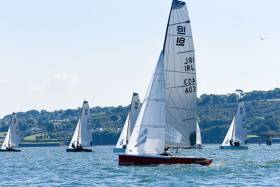Displaying items by tag: TR 42
Irish Sailing Association Seeks Nominees for Junior & All Ireland Sailing Championships
The Irish Sailing Association is inviting class associations to make nominations for the ISA All Ireland Sailing Championship and ISA All Ireland Junior Sailing Championships 2016.
The ISA All Ireland Junior Sailing Championships on September 24th – 25th at Fastnet Marine & Outdoor Education Centre, Schull, Co. Cork. The event will be sailed in FMOEC TR 4.2 class two person dinghies.
The ISA All Ireland Sailing Championship on October 1st – 2nd at Royal Cork Yacht Club, Crosshaven, Co. Cork. The event will be sailed in National 18 three person dinghies.
The ISA is seeking three nominations from each of the senior classes. The junior and youth classes will be advised on the number of places allocated for that class as per notice of race. Nominations will be only accepted from classes whose affiliation fee is paid for 2016.
Class associations are also invited to suggest candidates for a wild card place; these would be members who have excelled at an International competition in the class during the year.
The age limit for the Junior Sailing Championships is under 19 years on December 31, 2016. If a class holds a junior/youth national championship for eligible sailors they may nominate to the Junior championship in the same way and enclosing a copy of the relevant Notice of Race. Please see the Notice of Race for both events below.
The ISA says its policy of a National Race Officer managing racing at a class’s national championship will be strictly applied.
The deadline for nominations is: ISA All Ireland Junior Sailing Championship is 1500hrs on the 12th of September, 2016 and 1500hrs on the 19th of September for the ISA All Ireland Sailing Championships





























































